In 1976, when I was fourteen,
I auditioned for the part of Herod’s Messenger in the York Mystery Plays. The
auditions took place in a long room with a makeshift stage at one end. The
director stood at the other end. She called out, ‘What is your name?’ I replied
emphatically, ‘Andrew Martin’, and she nodded to her assistant. I had got the
part because she could hear my voice.
After a month of rehearsals,
the performances took place in the York Museum Gardens before a bank of seating
constructed from scaffolding and when, on the opening night, I saw every one of
those 1500 seats filled, I felt ill. My nerves were not helped by the fact that
King Herod had turned out to be a bit of a liability. In rehearsals, he would
never stick to the script, but would improvise wittily, expecting me to do the
same. Two minutes before I went on, I threw up behind a tree in the Gardens.
Despite this, and despite
having a recurring nightmare of being about to go on stage and not knowing my
lines, I have engaged in amateur drama ever since. I do so perhaps because I am
addicted to the fear and excitement – two emotions that ought also to be
generated by crime fiction.
Theatre works well in crime
stories for various reasons. The artificiality of the theatre complements the
artificiality of the crime genre. The lights go down, and something dramatic is
going to happen, according to fixed rules. The action takes place at night.
There is the contrast between a plausible façade (the performance itself) and a
more sordid underlying reality (backstage). There are competing egos and
constant nervous tension.
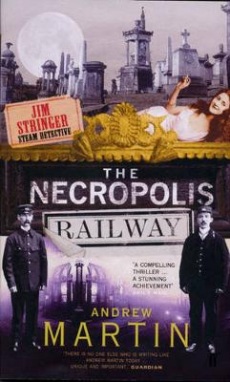
There have been theatre
scenes in about half of my crime novels. In The Necropolis Railway, the
first of my railway novels featuring Jim Stringer, Jim – slightly drunk – goes
to a music hall near Waterloo station in late 1903. The first act is a
ventriloquist, and both he and his doll look ‘exhausted’. The backcloth depicts
a broiling desert. As Jim observes, ‘The ventriloquist started talking –
shouting, really – about beating the Boers, and the doll would not take its
eyes off me.’ The second of those books, The Blackpool Highflyer,
features two rival ventriloquists, who might both have motives for train
wrecking. (I have an entire hamper full of documents about ventriloquism if anyone
feels like commissioning a book from me about it.)
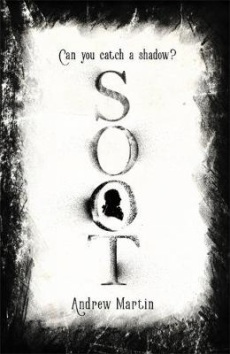
My last but one novel, Soot,
which concerns the murder of a silhouette painter in late 18th
century York, features a self-regarding actor – the kind of a person I might’ve
become if I’d had more confidence. I do possess the self-regard (some might
say) but I didn’t have the nerve to take up the offer of a place at drama
school when I left university.
In my latest novel, The
Martian Girl: a London Mystery, a woman in contemporary London is writing a
play about a younger woman who performed on the Victorian music hall stage as a
mind reader. She performed as The Martian Girl. Her actual name is Kate French,
and her partner in the act is a dead-eyed man called Draper who forswears any
interest in the ‘supernatural’ and would rather be called a ‘pretended mind
reader’. He is proud of his mastery of the complicated verbal codes by which
stage mind-reading is done, and he teaches them to Kate, who – broke and with
an ailing father – is on probation (so to speak) with Draper. She absolutely
must not make mistakes as Draper holds up objects borrowed from audience
members and asks Kate – who is blindfolded on stage – to identify them. She
must learn not only the code for – say – a handkerchief, which might be ‘What
is this I hold?’, but also the codes by which Draper conveys the colour, the
fabric, and the letters involved in any monogram. At first, Kate’s performances
are shaky, and I tried to convey her terror at sitting blindfold before two
thousand people as she mentally sorts through hundreds of significant phrases.
I first saw mock Victorian
music hall shows as a boy in Blackpool in the Seventies. I think they were
spin-offs from the TV show, The Good Old Days, which I still watch
(because it is endlessly repeated on BBC4). I liked music hall because it was
glamorous but down to earth. It seemed to present a luminous version of working
class life.
In Peter Ackroyd’s
fascinating slice of Victoriana, Dan Leno and the Limehouse Golem, the
heroine, Lizzy, goes to see that brilliant (but depressive) comedian, Dan Leno.
He is dressed as a dairy girl, ‘with a lovely picture of the Strand behind
him.’ In other words, the backcloth depicts ordinary shops, but somehow ‘much
more glorious than they were in reality…Even the dust on the stage seemed to
shine…’ (It bothers me that Leno – who also features in my own book – lost his
top billing when the novel was filmed as The Limehouse Golem, a much
less resonant title.)
The Roman Hat Mystery by Ellery Queen (1929) was
the first collaboration of Frederic Dannay and Manfred B. Lee, who jointly were
Ellery Queen. The story opens on a Monday evening in September when ‘a misty
rain softened the electric blaze of Broadway’s theatrical district.’ A man
called Monte Field is killed while watching a play at the Roman Theatre, and
the question is: what happened to his top hat? The novel contains Queen’s
trademark ‘Challenge to the Reader’ forty pages before the end. The action
stops, and the reader is buttonholed: ‘Who killed Monte Field? and ‘How Was the
Murder Accomplished?’ Rather disappointingly, I was able to answer the first
question, at least.
On the other hand, I did not
guess the killer in The Man in the Queue by Josephine Tey, which is
about the murder of a man waiting in a queue for a West End theatre box office.
The culprit is brilliantly concealed, and this is my favourite Tey novel, even
though not much of the action occurs within a theatre.
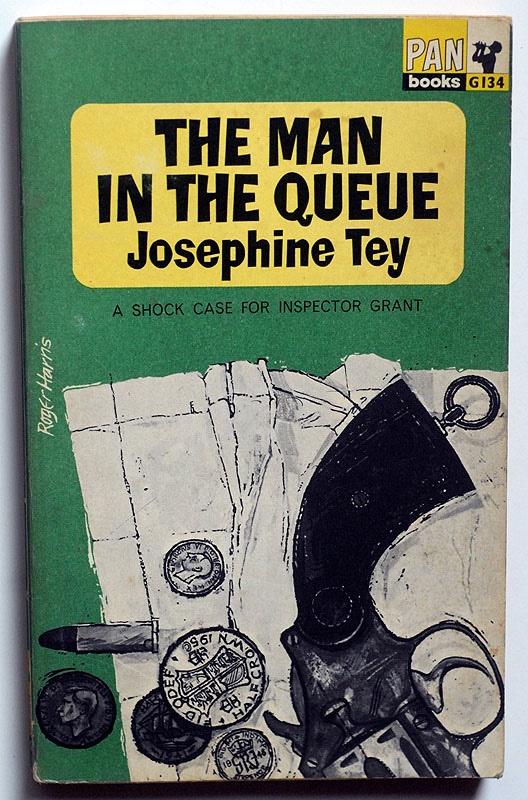
I have only just discovered Dame
Ngaio Marsh, who ascribed what she called her ‘damery’ to her work promoting
theatre in her native New Zealand. It seems that most of her novels have
theatre settings, or at least a theme of performance. In A Surfeit of
Lampreys, a charade is performed which may or may not have a bearing on a
gruesome murder. That was the first Marsh that I read. In the opening chapter,
the heroine, Roberta Gray, sails to London from New Zealand, and as the ship
approaches the dock, she watches ‘the dawn light on cold ruffles of foam’. So
here is a much better writer than that other Dame of the Golden Age, Agatha
Christie. I have just started Opening Night by Marsh, about the murder
of an unpopular actor. In the first chapter, Martyn Tarne (a woman) visits a
theatre late in the evening desperately seeking employment. She stands in the
empty stalls: ‘The deadened air smelt of naphthalene and plush.’ She then peeks
into the deserted star dressing room: ‘There were isolated dabs of colour on
the shelves and the looking glass; the lamp bulbs were smeared with cream and
red where sticks of greasepaint had been warmed at them…’
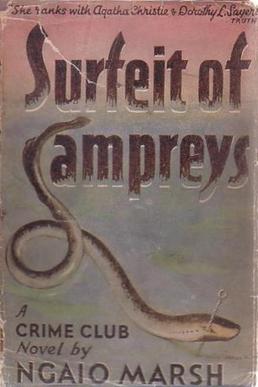
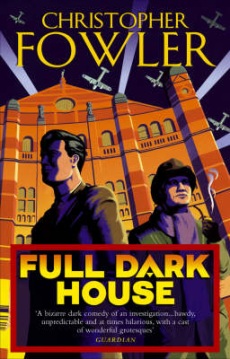
Any description of a theatre
‘out of hours’ will have a certain poignancy. But Christopher Fowler supplies a
particularly good one in Full Dark House (the first of his Bryant and
May mysteries), which is partly a kind of love letter to the Palace Theatre in
Cambridge Circus. Here it is on the morning after a murder (a body discovered
on the premises without feet); the year is 1940: ‘The interior of the Palace
was mock Gothic, with a marble central staircase that offered views back on
itself like a recurring image from an Escher etching. Its steps and walls were
worn pale, scoured by their nightly brush with more than a thousand bodies.
Dusty electroliers hung down through the stairwell, their crystals gleaming
dully like rows of low-grade pearls.’
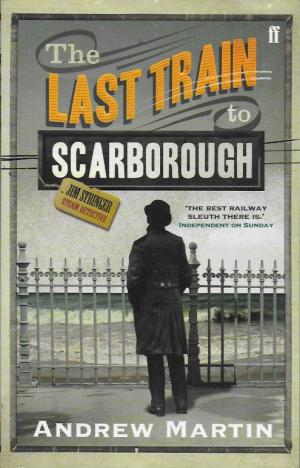
One of my own novels, The
Last Train to Scarborough, was adapted and performed at the Stephen Joseph
Theatre in Scarborough. I thought they did a good job of it, and I have seldom
been happier than at the end of the first act when my pleasure in seeing my
book on the stage was compounded by the prospect of the interval drink. (A
drink, moreover, that would be free to me as a VIP guest.) The approach of the
interval adds to that mood of excitement in stylised surroundings that is a
keynote of crime fiction and theatregoing – and it does so even when the play
is bad. Here is Jimmy, the splendidly realised louche theatre critic in Anthony
Quinn’s thriller, Curtain Call: ‘He peeked at his watch again. Quarter
to nine. Though his attention had wandered he could sniff the interval
approaching, like a gun dog picking up a scent.’
When I read a good novel with
a theatrical setting, I wonder again about whether I should have taken up that
place at drama school. But then it occurs that I did go into acting, in a way.
It’s just that I play all the parts, and the theatre is in my mind.
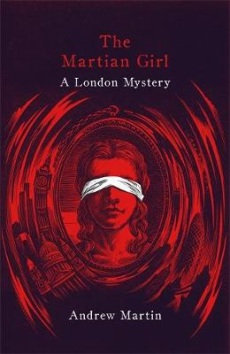
Andrew
Martin’s new novel, The Martian Girl: a London Mystery, is published by
Corsair.
Author photo © Faber&Faber